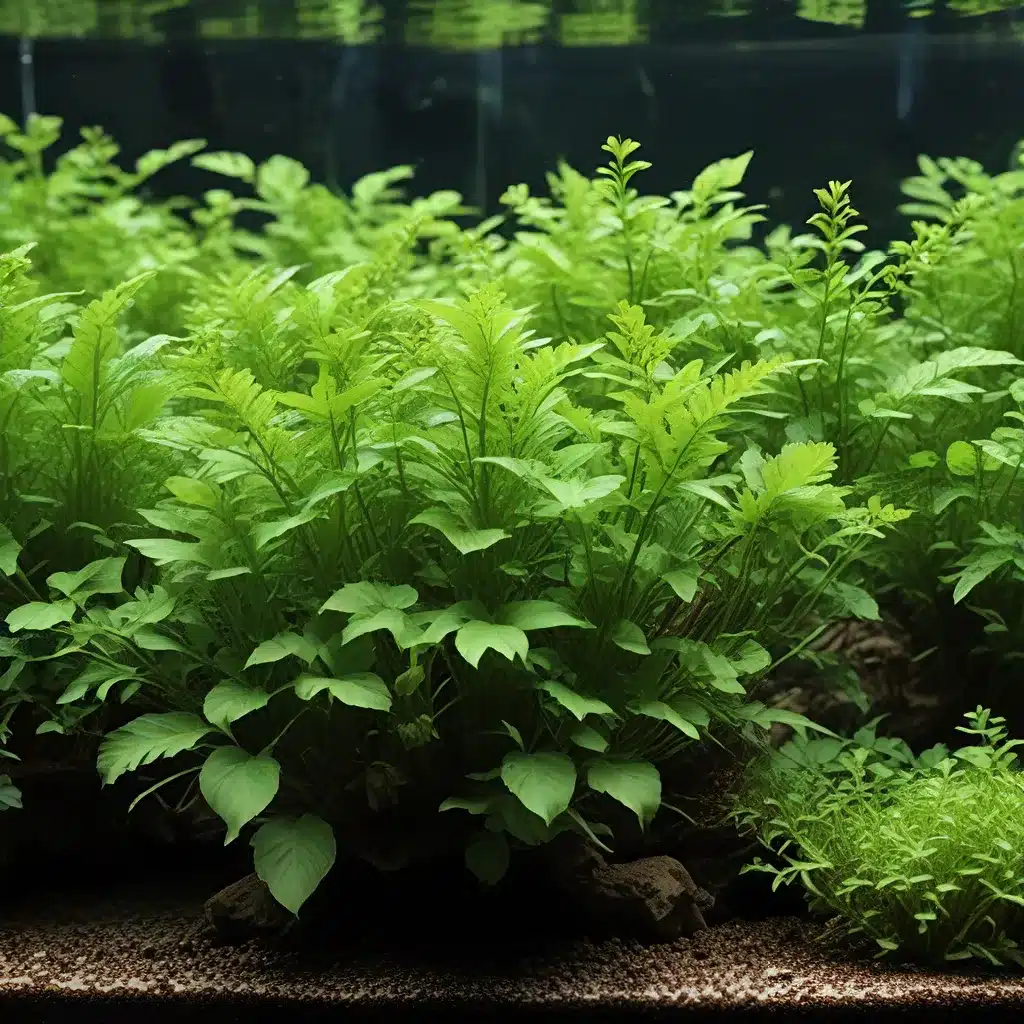
Understanding the Risks and Benefits of Introducing New Aquarium Plants
Introducing new aquatic plant species to an established aquarium can be a delicate and rewarding process. While the addition of novel flora can breathe fresh life into your underwaterscape, improper acclimation can lead to disastrous consequences, such as the domination of invasive plants or the collapse of the entire ecosystem. As passionate aquarists, it’s crucial to understand the complexities involved in successfully incorporating new aquarium plants into your setup.
At the heart of this challenge lies the concept of introduced species. An introduced species, also known as a non-native or exotic species, is one that has been intentionally or accidentally brought into an environment outside of its natural range, often through human activities. While some introduced species may integrate seamlessly into their new habitat, others can become invasive, outcompeting native plants and disrupting the delicate balance of the aquarium ecosystem.
The impact of introduced species can be highly variable, ranging from negligible to catastrophic. Some may have little to no negative effect, while others can cause significant ecological, economic, or even human health-related harm. Invasive species, in particular, are of great concern, as they have the potential to spread rapidly, displace native flora and fauna, and wreak havoc on the established ecosystem.
Navigating the Aquarium Plant Acclimation Process
When it comes to introducing new aquarium plants, the key to success lies in a well-planned and meticulous acclimation process. Here are the essential steps to ensure a seamless integration of new species into your aquarium:
1. Research and Selection
Before making a purchase, thoroughly research the characteristics, care requirements, and potential invasiveness of the plant species you’re considering. Consult reputable online resources, such as Seriously Fish or Aquarium Co-Op, to gather information on the plant’s native habitat, growth patterns, and compatibility with your existing aquarium setup.
2. Quarantine and Inspection
Once you’ve acquired the new plant, it’s crucial to quarantine it in a separate tank or container for a period of at least 2-4 weeks. During this time, closely monitor the plant for signs of disease, pests, or any other issues that could potentially be introduced to your main aquarium. Carefully inspect the plant for any hitchhiking organisms, such as snails, shrimp, or even tiny fish fry, that may have come along for the ride.
3. Gradual Acclimation
When ready to introduce the new plant, begin the acclimation process by slowly adjusting the water parameters in the quarantine tank to match those of your main aquarium. This includes parameters such as pH, temperature, and nutrient levels. Gradually mix the water from the two tanks over the course of several hours or days to allow the plant to adapt to the new environment.
4. Planting and Monitoring
Finally, carefully transplant the acclimated plant into your main aquarium, ensuring that it is securely rooted or anchored in the substrate. Closely monitor the plant’s growth and behavior over the next several weeks, looking for any signs of stress, disease, or aggressive spreading that could indicate the plant is becoming invasive.
Techniques for Successful Aquarium Plant Introductions
In addition to the standard acclimation process, there are several advanced techniques and strategies that can help ensure the long-term success of new aquarium plant introductions:
Quarantine and Disease Treatment
Thoroughly inspect any new plants for signs of disease or pests, and consider treating them with a mild anti-fungal or anti-bacterial solution before introduction. This can help prevent the spread of pathogens to your established tank inhabitants.
Gradual Nutrient Acclimation
If the new plant species has significantly different nutrient requirements than your existing plants, gradually adjust the fertilization regimen in your main aquarium to accommodate the newcomer. This can involve increasing or decreasing the levels of specific nutrients, such as nitrogen, phosphorus, or iron.
Sustainable Aquascaping Techniques
Employ sustainable aquascaping practices, such as using natural, slow-growing substrates and minimizing the use of fast-growing, aggressive species. This can help maintain a balanced ecosystem and prevent the dominance of any single plant type.
Advanced Filtration and Water Management
Invest in high-quality filtration systems and regularly monitor and maintain water parameters to support the healthy growth of your aquarium plants. This may include the use of specialized media, protein skimmers, or UV sterilizers to keep the water pristine.
The Rewards of Successful Plant Introductions
When done correctly, the introduction of new aquarium plant species can breathe new life into your underwater oasis, transforming it into a vibrant and captivating display. By carefully researching, acclimating, and managing the integration of these new additions, you can create a lush, diverse, and harmonious aquatic environment that will delight both you and your finned companions.
Remember, the King Aquarium team is always here to provide expert guidance and support as you navigate the rewarding world of aquarium plant introductions. With the right knowledge and techniques, you can seamlessly incorporate new species into your setup, unlocking the full potential of your aquatic haven.

